How to Reduce Pain After Nose Surgery
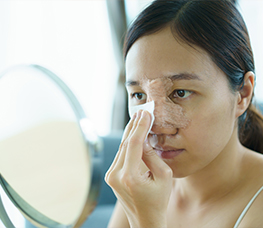
Tips to Deal With Rhinoplasty Pain
Rhinoplasty helps to transform the appearance. It is an extremely popular procedure. But before resorting to it, people are nervous and ask many questions. And this is understandable. So, how painful is rhinoplasty? How long does the nose job pain last? And how can you reduce it if possible? The answers are in our article. We will discuss nose surgery healing and explain how to care for nasal incisions. Based on this information, you will decide whether rhinoplasty suits you.
Nose Surgery
It is a popular surgical procedure aimed at reshaping or restoring the nose, which has aesthetic or functional purposes. The doctor makes incisions to eliminate nasal deformities and ensure the ideal result for the client. The doctor separates the nose’s skin and soft tissue from the underlying structures, reshapes the bones and cartilage, and then places the skin and soft tissue over these structures. The operation requires the surgeon’s professionalism. Finding the patient’s history and preparing for self-care after the operation are also essential.
The Structures of the Nose that the Doctor Uses during Rhinoplasty
Nasal Structures
Every little detail of the nose plays a vital role in form and function.
The nasal passages regulate airflow and affect a person’s health. The septum divides the nasal cavity into two parts. The nasal bones provide the framework, and the upper third of the bridge of the nose provides the best postoperative results.
Cartilage
This strong and flexible tissue shapes parts of the nose, especially the lower two-thirds. It is plastic, which allows surgeons to achieve excellent results during rhinoplasty. Each element is involved in creating the ideal shape that the client strives for.
Recovery Process after Rhinoplasty
Discomfort after surgery is quite possible, but it will soon pass. You may feel pressure in the sinuses and have a sore throat. But as a rule, these sensations will pass within a few days. The main thing is to stay calm. The swelling is not particularly noticeable now but may increase later.
The swelling and bruising will decrease within a few weeks after the surgery. Your nose’s appearance will change, and this should not worry you. However, you should consult your doctor at all stages. Nasal congestion and even decreased olfactory sensitivity are also possible.
Stress can negatively affect your health, so lead a calm lifestyle for now. Follow your doctor’s instructions to ease the recovery period. The final results will appear in the weeks and months. Soon, you will see in the mirror the result you dreamed of!
What Can Be Done to Relieve Pain and Swelling After Rhinoplasty?
Pain, swelling, and bruising after rhinoplasty are possible. Here are effective methods you can use to ease your condition:
Remember that this is TEMPORARY!
Your discomfort will gradually decrease. If the doctor says that everything is fine, try to relax. You will feel better if you lead a calm lifestyle and do not get nervous. Most rhinoplasty patients experience swelling, especially in the first days after surgery, but soon, they will feel better.
Take Painkillers
Your doctor will likely recommend prescription painkillers. These will help reduce pain. And antibiotics will reduce the chance of infection. Medications can reduce pain. Always talk to your doctor about which medications to take and in what dosage. Every case is different. You should avoid medications that contain blood thinners. These medications are harmful to your recovery.
Use a Cold Compress
Apply a cold compress to your face to reduce swelling, which also reduces pain. Also, try sleeping for a couple of days, resting your head on a high pillow to elevate it. You can also relax in this position during the day. This can stimulate blood flow, which will also lead to a decrease in swelling and discomfort. When applying a cold compress, be careful because your skin may become especially sensitive after surgery.
Rest Plenty
Excessive stress and fatigue can increase pain after nose reconstruction surgery and slow down the healing process. Try to relax physically and mentally. Avoid running, heavy lifting, and even specific yoga poses to avoid complicating the tissue healing process and increasing discomfort.
Watch your Facial Expressions
Blowing your nose, sneezing, laughing, or crying can reduce swelling and pain. Smile gently, frown, and raise your eyebrows. Such caution will help prevent or reduce discomfort. It is not recommended to use straws when drinking.
Caring for Your Incisions
Maintaining good hygiene is important to prevent complications. Protect your surgical sites from germs. Change your dressings, which are very important during the recovery process. Dressings provide an extra layer of safety from harm. Move carefully.
Be Prepared for Changes in Your Appearance
Rhinoplasty changes your nose’s shape and structure, leading to significant changes in your facial features. However, it will take a couple of months to see the results you have dreamed of. At first, swelling will distort your appearance. Just wait.
Dietary Changes
It is always important to maintain a healthy diet. This is especially important during the recovery period after rhinoplasty, when healthy eating habits help in tissue healing and pain reduction. Eat foods rich in protein and vitamins. Vitamin K is especially useful. This will help reduce swelling. Avoid sweet and processed foods during this period, and drink plenty of fluids.
Exercise Properly
You don’t have to avoid physical activity altogether. If your doctor has given you the green light to exercise moderately, you can begin carefully. Balance rest with moderate physical activity.
Follow these tips to reduce post-rhinoplasty pain and recover as quickly as possible.
Rhinoplasty and Smell
You should be prepared because rhinoplasty may temporarily affect your sense of smell. Your sense of smell typically returns to its previous level soon after recovery. Consult your surgeon to prevent or resolve problems.
Conclusions
Considering facial plastic surgery? Rhinoplasty is a great way to transform your appearance.
Welcome to Robinson Facial Plastic Surgery. Dr. Robinson’s knowledge of the fine structure of the face, anatomy, and aesthetics will help you achieve the desired results. We will advise you on recovering from the procedure as quickly as possible. Please schedule a consultation with us.

Dr. Ernest Robinson
Facial Plastic Surgeon
With over 28 years of experience, Dr. Ernest B. Robinson, a dual board-certified facial plastic and reconstructive surgeon, leads a Southern California practice. A graduate of Loma Linda University School of Medicine, he specializes in Facial Plastic surgery and corrective surgeries of the Head and Neck. Board-certified by the American Academy of Facial Plastic and Reconstructive Surgery and the American Board of Otolaryngology – Head and Neck Surgery, Dr. Robinson welcomes patients from Aliso Viejo, Irvine, Laguna Hills, Laguna Niguel, Lake Forest, Mission Viejo, and nearby areas at his offices in Aliso Viejo and Laguna Hills, California.
Location: Aliso Viejo and Laguna Hills, California
Areas of Expertise: Facial Plastic and Reconstructive Surgery,Cosmetic and Corrective Surgeries,Patient-Centric Care
Trust Your Face To A
Facial Plastic Surgeon

Testimonials
Patient Testimonials
Surgical Procedures
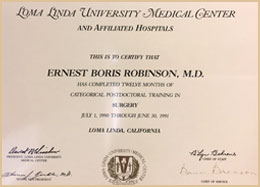
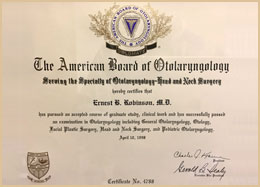
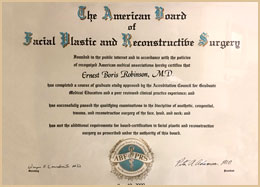
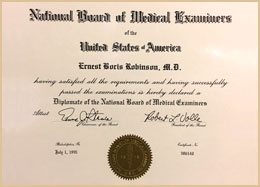
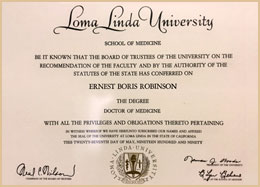

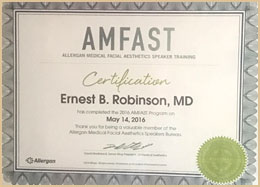
Our Offices
949 831 5900 | 888 355 3223
15 Mareblu ste 340,
Aliso Viejo, CA 92656
24022 Calle De La Plata
Laguna Hills, CA 92653-3626

This website does not contain medical advice and the use of this website does not create a physician/patient relationship between you and Robinson Facial Plastic Surgery. The photographs of models displayed on this web site are for decorative purposes only. See before & after photos for possible results.
Quick Contacts
- Phone : 949 831 5900 | 888 355 3223
- Email : clinic@surgery.co
- Address : 15 Mareblu ste #340, Aliso Viejo, CA 92656
- Country : United States
- Copyright © 2025 Robinson Facial Plastic Surgery
- Technijian. All rights reserved.
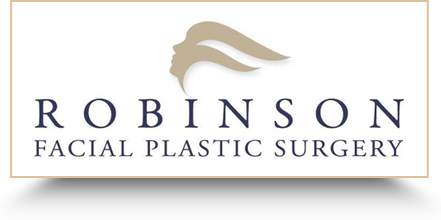

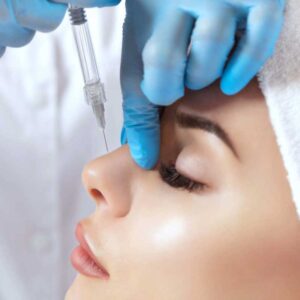
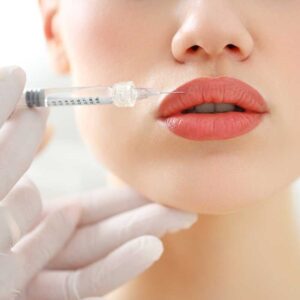
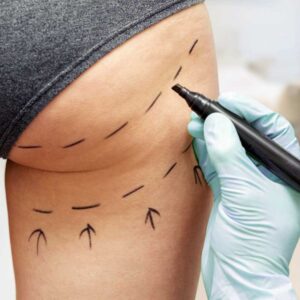
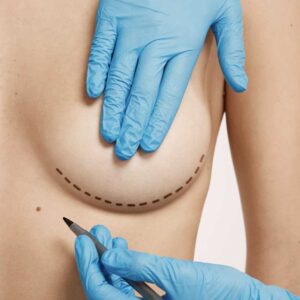
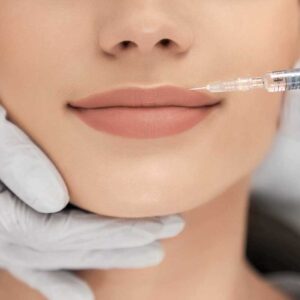
Leave a Reply